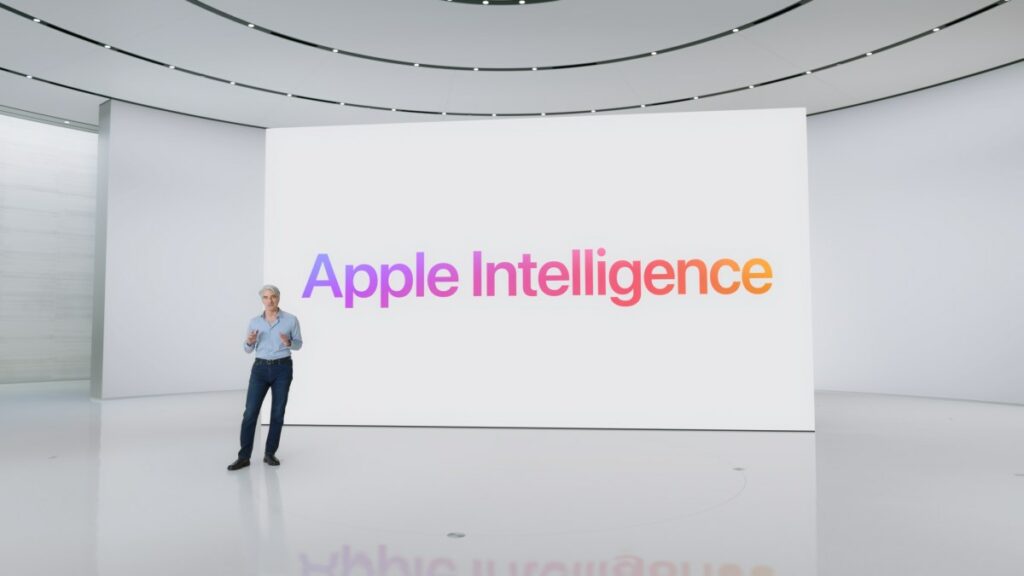If you’ve upgraded to a newer iPhone model recently, you’ve probably noticed that Apple Intelligence is showing up in some of your most-used apps, like Messages, Mail, and Notes. Apple Intelligence (yes, also abbreviated to AI) showed up in Apple’s ecosystem in October 2024, and it’s here to stay as Apple competes with Google, OpenAI, Anthropic, and others to build the best AI tools.
What is Apple Intelligence?

Cupertino marketing executives have branded Apple Intelligence: “AI for the rest of us.” The platform is designed to leverage the things that generative AI already does well, like text and image generation, to improve upon existing features. Like other platforms including ChatGPT and Google Gemini, Apple Intelligence was trained on large information models. These systems use deep learning to form connections, whether it be text, images, video or music.
The text offering, powered by LLM, presents itself as Writing Tools. The feature is available across various Apple apps, including Mail, Messages, Pages and Notifications. It can be used to provide summaries of long text, proofread and even write messages for you, using content and tone prompts.
Image generation has been integrated as well, in similar fashion — albeit a bit less seamlessly. Users can prompt Apple Intelligence to generate custom emojis (Genmojis) in an Apple house style. Image Playground, meanwhile, is a standalone image generation app that utilizes prompts to create visual content than can be used in Messages, Keynote or shared via social media.
Apple Intelligence also marks a long-awaited face-lift for Siri. The smart assistant was early to the game, but has mostly been neglected for the past several years. Siri is integrated much more deeply into Apple’s operating systems; for instance, instead of the familiar icon, users will see a glowing light around the edge of their iPhone screen when it’s doing its thing.
More important, new Siri works across apps. That means, for example, that you can ask Siri to edit a photo and then insert it directly into a text message. It’s a frictionless experience the assistant had previously lacked. Onscreen awareness means Siri uses the context of the content you’re currently engaged with to provide an appropriate answer.
Leading up to WWDC 2025, many expected that Apple would introduce us to an even more souped-up version of Siri, but we’re going to have to wait a bit longer.
“As we’ve shared, we’re continuing our work to deliver the features that make Siri even more personal,” said Apple SVP of Software Engineering Craig Federighi at WWDC 2025. “This work needed more time to reach our high-quality bar, and we look forward to sharing more about it in the coming year.”
This yet-to-be-released, more personalized version of Siri is supposed to be able to understand “personal context,” like your relationships, communications routine, and more. But according to a Bloomberg report, the in-development version of this new Siri is too error-ridden to ship, hence its delay.
At WWDC 2025, Apple also unveiled a new AI feature called Visual Intelligence, which helps you do an image search for things you see as you browse. Apple also unveiled a Live Translation feature that can translate conversations in real time in the Messages, FaceTime, and Phone apps.
Visual Intelligence and Live Translation are expected to be available later in 2025, when iOS 26 launches to the public.
When was Apple Intelligence unveiled?
After months of speculation, Apple Intelligence took center stage at WWDC 2024. The platform was announced in the wake of a torrent of generative AI news from companies like Google and Open AI, causing concern that the famously tight-lipped tech giant had missed the boat on the latest tech craze.
Contrary to such speculation, however, Apple had a team in place, working on what proved to be a very Apple approach to artificial intelligence. There was still pizzazz amid the demos — Apple always loves to put on a show — but Apple Intelligence is ultimately a very pragmatic take on the category.
Apple Intelligence isn’t a standalone feature. Rather, it’s about integrating into existing offerings. While it is a branding exercise in a very real sense, the large language model (LLM) driven technology will operate behind the scenes. As far as the consumer is concerned, the technology will mostly present itself in the form of new features for existing apps.
We learned more during the Apple’s iPhone 16 event in September 2024. During the event, Apple touted a number of AI-powered features coming to its devices, from translation on the Apple Watch Series 10, visual search on iPhones, and a number of tweaks to Siri’s capabilities. The first wave of Apple Intelligence is arriving at the end of October, as part of iOS 18.1, iPadOS 18.1 and macOS Sequoia 15.1.
The features launched first in U.S. English. Apple later added Australian, Canadian, New Zealand, South African, and U.K. English localizations. Support for Chinese, English (India), English (Singapore), French, German, Italian, Japanese, Korean, Portuguese, Spanish, and Vietnamese will arrive in 2025.
Who gets Apple Intelligence?

The first wave of Apple Intelligence arrived in October 2024 va iOS 18.1, iPadOS 18., and macOS Sequoia 15.1 updates. These updates included integrated writing tools, image cleanup, article summaries, and a typing input for the redesigned Siri experience. A second wave of features became available as part of iOS 18.2, iPadOS 18.2 and macOS Sequoia 15.2. That list includes, Genmoji, Image Playground, Visual Intelligence, Image Wand, and ChatGPT integration.
These offerings are free to use, so long as you have one of the following pieces of hardware:
- All iPhone 16 models
- iPhone 15 Pro Max (A17 Pro)
- iPhone 15 Pro (A17 Pro)
- iPad Pro (M1 and later)
- iPad Air (M1 and later)
- iPad mini (A17 or later)
- MacBook Air (M1 and later)
- MacBook Pro (M1 and later)
- iMac (M1 and later)
- Mac mini (M1 and later)
- Mac Studio (M1 Max and later)
- Mac Pro (M2 Ultra)
Notably, only the Pro versions of the iPhone 15 are getting access, owing to shortcomings on the standard model’s chipset. Presumably, however, the whole iPhone 16 line will be able to run Apple Intelligence when it arrives.
How does Apple’s AI work without an internet connection?

When you ask GPT or Gemini a question, your query is being sent to external servers to generate a response, which requires an internet connection. But Apple has taken a small-model, bespoke approach to training.
The biggest benefit of this approach is that many of these tasks become far less resource intensive and can be performed on-device. This is because, rather than relying on the kind of kitchen sink approach that fuels platforms like GPT and Gemini, the company has compiled datasets in-house for specific tasks like, say, composing an email.
That doesn’t apply to everything, however. More complex queries will utilize the new Private Cloud Compute offering. The company now operates remote servers running on Apple Silicon, which it claims allows it to offer the same level of privacy as its consumer devices. Whether an action is being performed locally or via the cloud will be invisible to the user, unless their device is offline, at which point remote queries will toss up an error.
Apple Intelligence with third-party apps

A lot of noise was made about Apple’s pending partnership with OpenAI ahead of the launch of Apple Intelligence. Ultimately, however, it turned out that the deal was less about powering Apple Intelligence and more about offering an alternative platform for those things it’s not really built for. It’s a tacit acknowledgement that building a small-model system has its limitation.
Apple Intelligence is free. So, too, is access to ChatGPT. However, those with paid accounts to the latter will have access to premium features free users don’t, including unlimited queries.
ChatGPT integration, which debuts on iOS 18.2, iPadOS 18.2, and macOS Sequoia 15.2, has two primary roles: supplementing Siri’s knowledge base and adding to the existing Writing Tools options.
With the service enabled, certain questions will prompt the new Siri to ask the user to approve its accessing ChatGPT. Recipes and travel planning are examples of questions that may surface the option. Users can also directly prompt Siri to “ask ChatGPT.”
Compose is the other primary ChatGPT feature available through Apple Intelligence. Users can access it in any app that supports the new Writing Tools feature. Compose adds the ability to write content based on a prompt. That joins existing writing tools like Style and Summary.
We know for sure that Apple plans to partner with additional generative AI services. The company all but said that Google Gemini is next on that list.
Can developers build on Apple’s AI models?
At WWDC 2025, Apple announced what it calls the Foundation Models framework, which will let developers tap into its AI models while offline.
This makes it more possible for developers to build AI features into their third-party apps that leverage Apple’s existing systems.
“For example, if you’re getting ready for an exam, an app like Kahoot can create a personalized quiz from your notes to make studying more engaging,” Federighi said at WWDC. “And because it happens using on-device models, this happens without cloud API costs […] We couldn’t be more excited about how developers can build on Apple intelligence to bring you new experiences that are smart, available when you’re offline, and that protect your privacy.”


